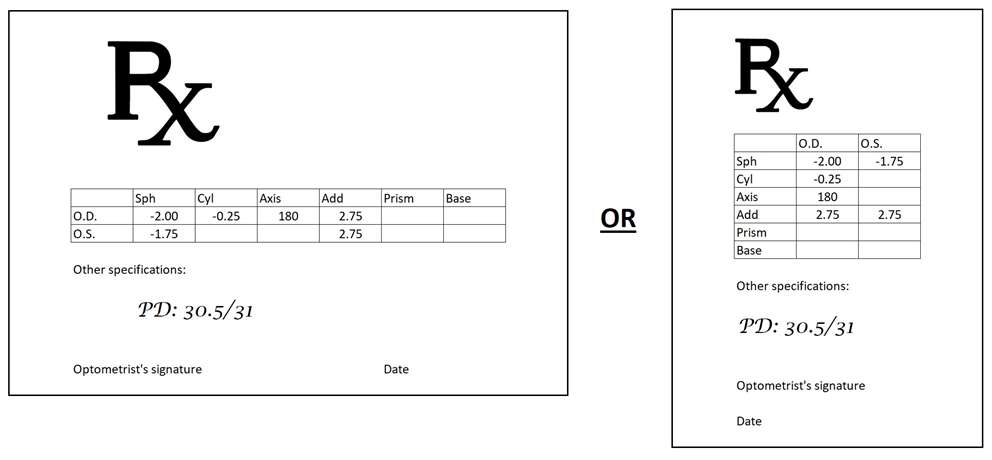
Having trouble understanding some of the words and abbreviations on your prescription? Don't worry, we're here to teach you what it all means.
To put it simply, your glasses prescription is a series of numbers, usually in a chart, and those numbers help us create lenses that will best correct your vision. Prescription charts typically have two rows—one for your right eye and one for your left—as well as five columns, one for each type of correction. The layout should be similar to one of the following:

Here is what the abbreviations mean:
SPH OR SPHERE
The “spherical error” refers to correction needed for nearsighted ( - ) or farsightedness ( + ). The larger the number following the +/-, the stronger your prescription.
CYL OR CYLINDER
Cylinder is needed to treat astigmatism. It causes distorted and blurred vision which can result in headaches. The amount of lens power needed for correction and is measured in quarters and proceeded most commonly by a ( - ) or rarely by a ( + ).
AXIS
Refers to the axis of astigmatism, measured in degrees from 1 to 180.
ADD OR NV
ADD is the additive power needed for Near Vision, this is used to prescribe a multifocal or reading correction, measured in quarters. This power for progressive lenses enlarges immediate vision and is therefore always indicated by a positive sign ( + ).
OD & OS
The medical abbreviation OD, oculus dexter, refers to the right eye, whereas OS, or oculus sinester, is your left. Sometimes these two are simplified to R and L.
PD
Refers to the distance between your pupils. Once we have this information, we can determine how to place your lenses in your frame. Just ask your optician; they should have your PD on file. You can also measure your PD yourself. If you have two measures, the first refers to the distance between the center of your right pupil and your nose root, while the latter corresponds to the distance between the center of your left pupil and your nose root.
PRISM
Prism refers to the prismatic power used to correct vision displacement. It helps to reduce eyestrain and correct double vision. This measure is always followed by one of the following 4 acronyms as well as the required degree of correction: